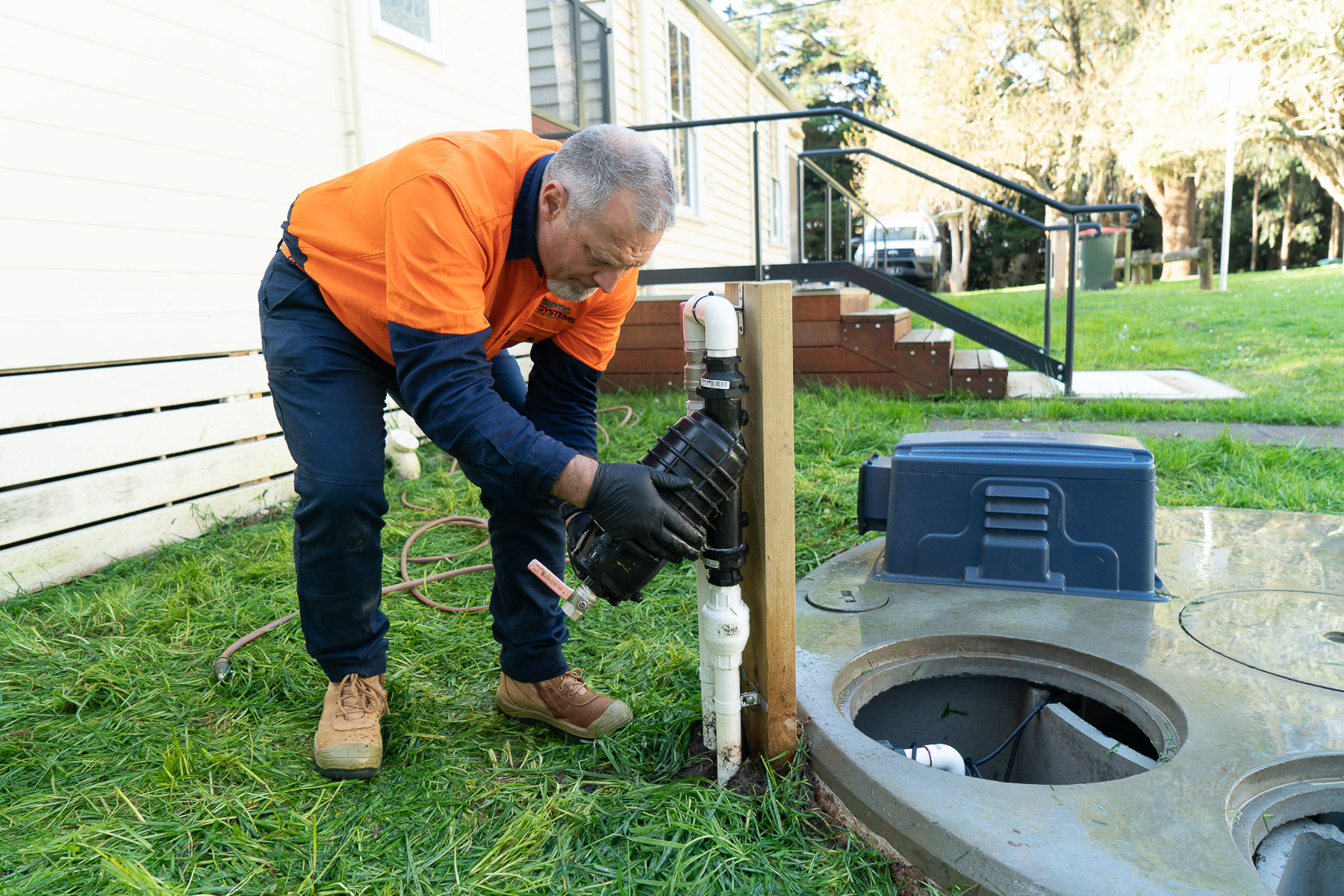Septic tank maintenance is a crucial part of prolonging the life of your system. Making sure it’s cared for properly will save you a lot of time, money and effort in the long run, and more importantly, you won’t have to deal with any nasty malfunctions caused by improper maintenance. Follow these tips from the experts in getting their hands dirty to make sure that your septic tank doesn’t leave you up the creek without a paddle.
The DOs of Septic Tanks
Let’s start off with the good news. Caring for your system is not an insurmountable job – in fact, if you begin on the right foot with a proper, high-quality installation and all of your permits, it’s fairly easy. Here’s the breakdown of what you should be doing.
-
Ensure you have all of the necessary permits before installing and using your septic system. You will need to obtain a Permit to Install (PTI) or a Permit to Alter (PTA) your septic system, through the health department of your local council. To obtain one, you need to provide all the relevant documentation, including the design of your septic system to demonstrate that your installation will be compliant with the relevant Australian Standards and Codes of Practice. You will sometimes be required to submit additional documentation such as a Land Capability Assessment (LCA).
-
Ensure your system is installed by a licensed plumber or drainer and commissioned by an accredited service technician. If you don’t want someone inexperienced installing your television, then you certainly don’t want someone who doesn’t know what they’re doing installing a system designed for treating waste. Your septic tank is a complex system, and there’s a lot that can go wrong following a botched installation. Costs to repair a poor-quality installation can sky-rocket quickly, so take the time to find someone qualified and make sure you are confident they will install your system to a high quality
-
Make sure that your system is serviced quarterly and de-sludged every three years (on average). This helps to keep on top of any potential malfunctions, and desludging is required to remove all of the accumulated solids on the bottom of your tank. Leave that for too long and you might find yourself dealing with a whole lot of effluent where you really don’t want it to be.
-
Check and clean your irrigation filter fortnightly (if applicable), and make sure to use septic-safe or low phosphorus products. Regularly cleaning your filter will keep your system running in tip-top shape, as there’s no room for clogging when the filter itself is regularly treated. Build-ups can cause blockages, which lead to a whole host of other issues going forward. Also, remember to reduce or entirely eliminate any fats and oils going into your system, as they can cause similar problems when they solidify. Not fun!
-
Plant suitable shrubs and ground cover near your system. Essentially what we mean by this is that you should still be able to get to your access points easily, and the roots of your chosen shrubs shouldn’t be long or strong enough to compromise your system in any way. Choose tough, hardy grasses and smaller bushes that can handle the environment and the presence of wastewater.
The DO NOTs of Septic Tanks
Now, we go onto the things that you should not be doing with your septic tank systems if you want them to last. Like we said before, these are relatively straightforward and shouldn’t present much of a challenge if you’ve started out right. Implement the following habits, and you’ll be in the clear.
-
Don’t drive any vehicles within 3 metres of the access lids or within 6 metres of the irrigation field. Cars, trucks, and tractors create additional pressure on your buried tank, which can lead to it cracking or out-and-out breaking from the strain. Large-scale leaks are a serious contamination issue, especially if you rely on your land for your business, so practice keeping a safe distance. Small rides on lawnmowers are acceptable over subsurface irrigation systems.
-
Don’t allow anything living to consume the treated effluent from a domestic wastewater treatment system. This means that you shouldn’t allow animals or humans to drink the treated wastewater, but it also means that you should never let your livestock graze from the irrigation field, as it could lead to contamination and disease. Along the same vein, it’s unsafe to use the treated water to irrigate any edible produce as it contaminated it – only use the wastewater on things like grass or shrubbery that will not be consumed.
-
Never turn off the power to your system. Septic tank systems and treatment systems need continuous power to operate, and if they are turned off the entire process will be thrown out of alignment. Consider installing a supplemental or backup generator to make sure that your system is never without power.
-
Don’t allow any solvents, bleaching agents, antibacterial products or solid materials to enter the system. This applies to most cleaning materials, paint, petroleum and any strong alkaline or acid, as this throws off the aerobic and anaerobic processes by which the waste is treated. Sanitary products and condoms, nappies, food scraps, paper and plastic are also among the things that could cause a major blockage in your system.
AND FINALLY, NEVER ALLOW ANYONE UNAUTHORISED TO TAMPER WITH YOUR SYSTEM!
Here at SSA we are the wastewater lovers who want to get it right, first time, every time. Whether you’re installing commercial septic systems or residential ones, we can handle it all from stem to stern. Give us a call today to get started.
